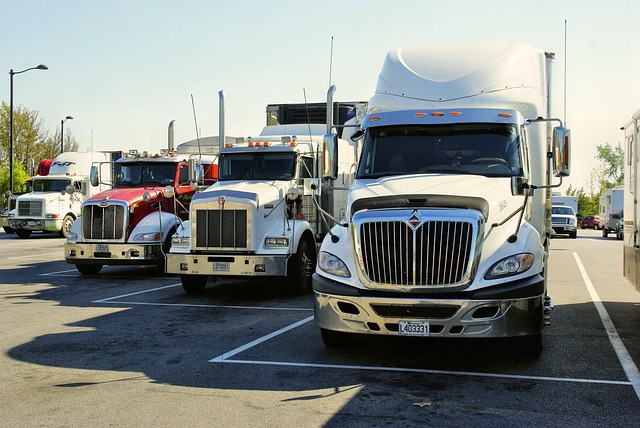Looking to register your car in California? This comprehensive guide breaks down the process, emphasizing the crucial step of VIN (Vehicle Identification Number) verification. Learn how this unique process ensures authenticity and safety standards for all registered vehicles. From gathering essential documents to selecting a registration location, we’ll navigate you through each step. By following these instructions, you’ll be on your way to securing your California vehicle registration quickly and efficiently, including post-registration considerations.
- Understanding VIN Verification in California Car Registration
- Gather Required Documents for Car Registration
- Select a California Vehicle Registration Location
- Complete the California Car Registration Process
- Post-Registration Steps and Important Considerations
Understanding VIN Verification in California Car Registration

In California, understanding VIN verification is a crucial step in the car registration process. The Vehicle Identification Number (VIN) acts as a unique fingerprint for your vehicle, providing critical information about its make, model, year, and specifications. During the registration, a VIN inspection ensures that the details on your car match those listed in the state’s records, enhancing the accuracy of California’s vehicle database. This verification process is essential to prevent fraud and ensure road safety.
A mobile vin inspection service can offer convenience by allowing you to complete this step without visiting a dealership or registration center. Mobile vin verifiers provide quick and accurate checks, often leveraging advanced technology to cross-reference your VIN with state records. By choosing a reputable mobile service, you streamline the registration process, saving time and potentially avoiding delays.
Gather Required Documents for Car Registration

Before you start the registration process, ensure you have all the necessary documents ready. In California, registering a car involves verifying the Vehicle Identification Number (VIN) as a crucial step. This is where a mobile VIN inspection or verification comes in handy, allowing you to complete this task efficiently from the comfort of your home or even while on the go. Gather important paperwork such as the title or bill of sale, which proves ownership, and a valid driver’s license or identification card. Additionally, have proof of insurance and any applicable registration fees readily available.
For a seamless experience, consider taking photos of these documents for easy reference during the registration process. This ensures you don’t miss any critical steps, especially when it comes to fulfilling the state’s requirements for vehicle registration. A mobile VIN inspection service can also help verify your car’s history and ensure all documentation is in order before submitting your application.
Select a California Vehicle Registration Location

When selecting a California vehicle registration location, consider your convenience and the services offered. You can choose to visit one of the many Caltrans (California Department of Transportation) offices or designated registration locations across the state. These official sites provide comprehensive services, including VIN (Vehicle Identification Number) verification, which is crucial for accurate registration.
For added flexibility, opt for a mobile VIN inspection or verification service. These services allow you to get your VIN checked at your convenience, whether at home or on the go. This modern approach streamlines the process, especially if you’re short on time or have limited mobility.
Complete the California Car Registration Process

Completing the California car registration process involves several steps to ensure your vehicle is legally operable within the state. Once you’ve gathered all necessary documents, including proof of insurance, a valid driver’s license, and payment for registration fees, it’s time to verify your vehicle’s unique identifier—the Vehicle Identification Number (VIN). This crucial step is often best handled by utilizing a mobile VIN verifier or conducting a VIN inspection, which can be done conveniently at many auto parts stores.
A mobile VIN verifier provides on-site, same-day service, allowing you to confirm your car’s history and ensure it meets California’s requirements in one trip. Alternatively, a vin inspection at a designated location checks for any discrepancies or potential issues that might affect registration, making the process smoother and more efficient.
Post-Registration Steps and Important Considerations

After successfully registering your car in California, there are several crucial post-registration steps and important considerations to keep in mind. One key step is ensuring proper vehicle maintenance and documentation. This includes keeping your registration documents up-to-date, maintaining accurate records of service and repairs, and completing any required emissions tests. Regularly checking your vehicle’s condition, especially after long trips or significant changes in usage, is essential for safety and legal compliance.
Additionally, consider utilizing a mobile vin verifier or conducting a mobile vin inspection to verify your vehicle’s history. This step goes beyond the standard registration process by providing detailed insights into the car’s past, including ownership records, accident history, and maintenance logs. A mobile vin verification service can be particularly convenient, allowing you to access this information quickly and efficiently from the comfort of your home or on-the-go. Such measures contribute to making informed decisions about your vehicle and ensuring a smoother driving experience in California.
Registering a car in California involves several steps, including successful VIN verification. By gathering the necessary documents, visiting an approved registration location, and completing the process thoroughly, you’ll ensure a smooth transition for your vehicle into the Golden State’s vast automotive landscape. Remember to follow post-registration instructions and consider important factors discussed in this guide to maintain compliance with California’s regulations.
